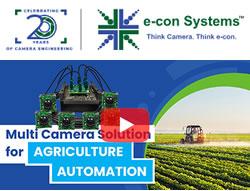Digital Farming Market SWOT Analysis, Growing Popularity and Emerging Trends during 2030
Digitization of farming is expected to help feed the growing population. Global population is expected to increase by about 40% and reach 9.6 billion by 2050.
Modern agriculture/farming is highly technical, and the growing digitization and technological advancement are further transforming the farming industry. The agriculture industry has been effectively exploiting the power that big data can bring to the operations. Software and algorithm are being created to pull essential data. This data is helping farms to improve farm profitability, increase farm sustainability, and enhance yield. Use of various equipment, software, remote sensors, and drones have automated data collection methods. According to AgFunder, globally over US$ 4.6 Bn was invested in food and agriculture technology in 2015. Large share of the investment was for software and other technological solutions to enhance digital agriculture.
Digitization of farming is expected to help feed the growing population. Global population is expected to increase by about 40% and reach 9.6 billion by 2050. Therefore, the overall food production needs to double to meet the rising demand for food. The current production rate, process, and distribution method would not be sufficient to feed the growing population; thus, adoption of new and advanced technology, at various levels of farming, is expected to become vital to meet the growing demand.
Get Sample Copy:
https://www.transparencymarketresearch.com/sample/sample.php?flag=S&rep_id=36455
Digital farming in a nutshell is the use of information technology in agriculture. It largely involves the use of connected devices and machinery and other digital technologies to improve yield. From precision farming, livestock monitoring, to greenhouse farming, connected devices and software contributes to all vital applications of farming.
Networked farm sensors monitor the amount of harvested produce in storage. This data provides farmers with an accurate idea about their stock. Drones generate field maps and photos providing vital information about the crop condition. Soil sensors generate report on nutrient content in the soil. Farm robots aid in sowing and harvesting crops. Satellite and mobile radio antennas provide information on weather and other related information.
Rising population and increasing demand for food are prominent factors driving the digital farming market. Moreover, the growing demand to efficiently deal with pests, weeds, and other diseases is encouraging farmers to digitize their farm. In developing regions, cheaper internet data and strong penetration of smart devices (especially smartphones) are driving the digital farming market. Active participation of governments in digitizing farms through investment is also driving the digital farm market. For instance, in October 2017, the Government of Karnataka (a state in India) signed a memorandum of understanding (MoU) with Microsoft Corporation to empower small farm holders with technology oriented solutions to improve productivity.
Request For PreBook Report@:
https://www.transparencymarketresearch.com/checkout.php?rep_id=36455<ype=S
High initial capital and limited awareness regarding digital farming are major concerns that are likely to restrain the market. Difficulties faced by farmers in using software, as well as data usage concerns among farmers are other prominent challenges in the market. However, the digital farming market creates numerous opportunities for solution providers. Market players can further improve their existing software, hardware, and services to cater to these problems. Advancements in predictive analytics is projected to be another opportunity for the market. Predictive analytics tools and software can help farmers take better decisions related to various farming activities. Moreover, digitally connecting farmers, suppliers, and consumers do away with the need for middlemen, thereby creating a win-win situation for all.
The digital farming market can be segmented based on component and application. In terms of component, the market includes hardware, software, and services. Based on application, the digital farming market includes precision farming, livestock monitoring, greenhouse framing, and others.
Key players operating in the digital farming market include Monsanto Company, Bayer Cropscience Limited, Deere & Company., Accenture PLC, Syngenta, AgGateway, Aglytix Inc., CropX Inc., Farmers Business Network (FBN), BASF SE, and DigitalGlobe.
Read Our Latest Press Release:
https://www.prnewswire.com/news-releases/penetration-of-digital-technologies-enable-online-gambling--betting-market-to-spread-its-customer-base-valuation-to-climb-to-whopping-us-134-5-bn-by-2027-tmr-301336438.html
Featured Product

